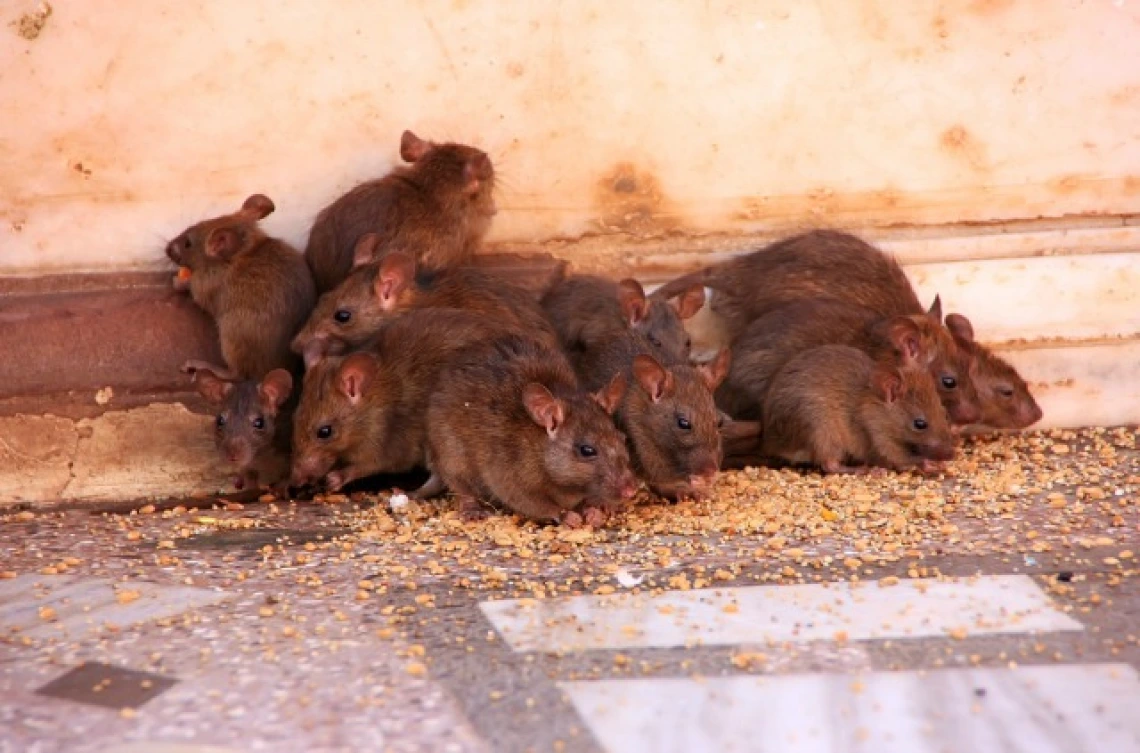Reducing Rat Populations Through UA-invented Humane Fertility Control

Two mating rats can produce 15,000 descendants in one year alone. They have achieved evolutionary success, to be sure, but that success becomes problematic when those populations cross paths with humans.
They spread disease, eat and destroy our food in the field and in storage, wreck our infrastructure, and the strategy we have been using more often than not is lethal poison, which is dangerous to people, other animals and the environment, and is never 100 percent effective.
Targeting Fertility, Not Mortality
While rats have been nibbling away in cities around the world, researchers at the University of Arizona were working on developing a non-reproductive rodent model for the study of menopause. In the College of Medicine – Tucson, Dr. Patricia Hoyer’s research yielded a chemical formulation that provided humane, non-lethal rodent infertility. Translation and reformulation of this invention has provided a new pest control strategy by targeting the root of the problem: reproduction. The technology allows for the management of animal populations by targeting their ability to produce offspring as opposed to killing them outright.
The invention offers a number of advantages over traditional lethal methods like anticoagulants and metal phosphides. Studies showed that the formulation, delivered through a liquid bait, chemically accelerates the depletion of ovaries and induces egg loss in female rats. It also causes testicular disruption in males. Not only do the rats become infertile, but the treatment causes no systemic toxicity or adverse side effects. Research also demonstrated that the treatment is quickly metabolized, residing in rodents’ blood for less than 15 minutes before being broken down. As an added benefit, it is environmentally neutral, does not affect the food chain and has no reported toxic effects on humans.
From the Lab to City Streets
Working closely with Dr. Hoyer, post-doctoral fellow Dr. Loretta Mayer and NAU Research Professor Dr. Cheryl Dyer, launched a start-up – SenesTech, Inc. – to bring the UA technology to the market. Since then, the team has further developed the formula, secured a registration from the EPA for the company’s US built a manufacturing facility, created a distribution network, and organized a national sales team to deliver the desired results: fewer rats, no poisons.
In 2011, the company received two NIH SBIR awards totaling over $1.1M that they used to bring the technology to the market. At that time, the SBA also honored the company with a Tibbetts award, which recognizes firms that have made a visible socio-economic impact and exemplify the best SBIR achievements.
Engaging the expertise of UA students and colleagues worldwide, the company began to address the critical-need markets and demonstrate their effectiveness through case studies. In cities where they tested their strategy, they documented population reductions of up to 46 percent in just 12 weeks. In targeted food production facilities, they showed a 43 percent reduction, and in zoos, animal sanctuaries and research facilities, they show reductions as high as 50 percent.
And while lethal rodenticides have compounded the problem by giving rise to resistant populations, the group’s latest publication demonstrates that contraception will not favor resistance.
Today the publicly traded company (SNES:NASDAQ) is working to expand their impact to island ecologies and other global needs. The technology has been translated for similar non-lethal formulations to manage mice and even feral pig populations.
The company continues to have a close relationship with the UA through Tech Launch Arizona, the University’s commercialization office.
“Our colleagues have helped us to see that reducing rat populations in rice farms in Asia by five percent could feed over 400 million people,” says Dr. Mayer, “and reducing the poison burden in our environment can slow the extinction of wild animals. Most of all, we’re refocusing our strategies from killing of animals to population management, but we must do this in collaboration with our academic colleagues. Any successful biotechnology must be built on sound science.”
This story originally appeared on the AUTM Better World Project website. (link is external)

